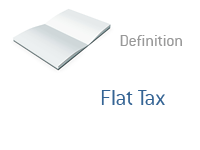

Imagine a country that has implemented a flat tax rate of 15% on all income. Let’s consider an example of how a flat tax system would work: Critics also suggest that a flat tax may not provide sufficient revenue for the government, particularly if it replaces a progressive tax system where higher earners contribute a larger proportion of their income in taxes. This is because a larger proportion of a lower-income person’s expenditure is on basic needs compared to a higher-income person. They also believe that it encourages economic growth by removing disincentives for earning higher income.Ĭritics, however, argue that a flat tax is regressive, as it places a heavier burden on lower-income individuals relative to their ability to pay. This is in contrast to progressive tax systems, where the tax rate increases as the taxable amount increases, and regressive tax systems, where the tax rate decreases as the taxable amount increases.Īdvocates of a flat tax system argue that it simplifies the tax code, makes compliance easier, and promotes fairness because everyone is taxed at the same rate.


A flat tax is a system of taxation where all taxpayers are charged the same fixed percentage of their income, regardless of the amount of income earned.


 0 kommentar(er)
0 kommentar(er)
